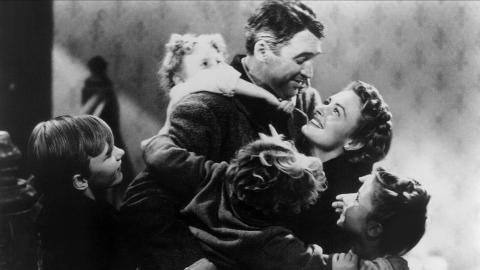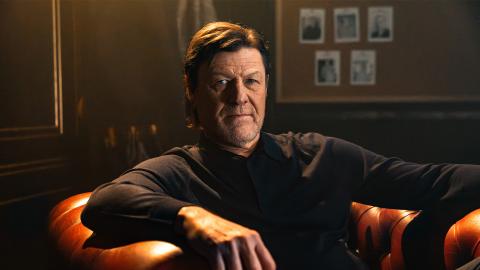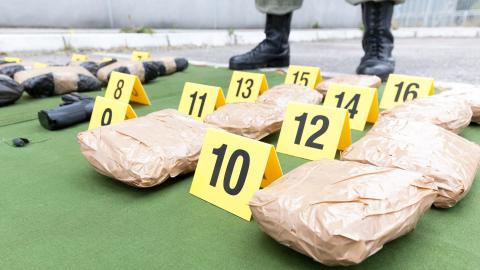On 11 September 1978, a man called Georgi Markov died in a London hospital, the victim of one of the most peculiar murders of the 20th Century. The method of the killing itself was peculiar, as was the immediate aftermath. And even odder is the fact that the number one suspect has evaded justice for decades, despite being named and located by determined investigators. Now, as new series Spy Wars comes to HISTORY, let’s look at the facts of a case that’s become a part of Cold War mythology.
Markov the marked man
Georgi Markov wasn’t a spy, businessman or politician. He was a writer, famed in his native Bulgaria for his plays and novels. Even during the dark and repressive days of the Cold War, when Bulgaria was a Communist dictatorship ruled over by the all-powerful Todor Zhivkov, the flamboyant and fun-loving Georgi Markov enjoyed the privileges of fame and critical respect. That is until the regime finally began to crack down on his work, and he was forced to defect to the West in 1969.
'There was a phial of poison in the Bulgarian consulate in Munich was actually named for Georgi’
Markov began a new life in London. He got married and had a child. He worked for the BBC World Service and – crucially – for Radio Free Europe, a US-backed organisation that broadcasted anti-Soviet propaganda across the Iron Curtain. Filled with righteous indignation against the Bulgarian regime, Markov didn’t just criticise the government in his broadcasts; he also attacked Todor Zhivkov personally. Markov’s own cousin recalled, ‘The fact that he alone wrote about Zhivkov in this unrestrained way provoked an enormous amount of hatred.’
He began receiving threatening phone calls. As a friend of Markov’s later said, one such call informed Markov ‘there was a phial of poison in the Bulgarian consulate in Munich was actually named for Georgi’. But the dissident writer brushed aside such threats as hollow.
Assassination by umbrella?
On 7 September 1978, Georgi Markov was waiting for a bus on Waterloo Bridge in central London when he felt a sudden sting in the back of his thigh. Turning around, he saw a man picking an umbrella up from the ground right behind him. The man muttered an apology in a foreign accent, then darted across the road to get into a black cab, which immediately drove off.
A little while later, Markov developed a fever, which rapidly worsened and forced him to seek out a hospital. At this point, he’d clearly put two and two together in his mind, telling nurses the KGB were out to get him. Dr Bernard Riley, the doctor who treated him that day, later recalled how amusing the staff found Markov at first.
'In cubicle one we have someone who’s had a heart attack, in cubicle two there’s a road traffic accident case, and in cubicle three there’s a man who’s been shot by the KGB. No one was taking him seriously.’
But that changed when Markov’s condition dramatically declined, and his status as a Bulgarian dissident exile became known. When he died days later, on 11 September, the police suspected foul play. But how to prove it, when there was no trace of poison in his body?
A chunk of tissue from Markov’s leg, around the site of the ‘sting’, was removed and sent to Porton Down, a top-secret military research facility in rural Wiltshire. It was here that, while dissecting the tissue, an analyst felt the plink of his scalpel hitting something metallic. It was a tiny ball bearing, which was promptly dispatched to Scotland Yard for closer inspection.
The ball bearing was so small that examining it was a tough ask – it kept flying off the desk and onto the floor, forcing the ballistics expert to crawl around desperately to recover it. But it was eventually discovered to have two incredibly tiny holes, which had presumably been filled with a toxin, and then sealed with a waxy substance designed to melt at body temperature. This meant the poison would leak out into the victim after the ball was embedded in the flesh.
Experts deduced the likely toxin to have been ricin, a substance made from castor beans which is far more potent than cyanide. To test the theory, researchers at Porton Down injected a pig with ricin. It exhibited the same symptoms as Markov, and an autopsy showed identical damage to its organs.
Naming the assassin
It was years later, after the fall of the USSR, that a former Soviet official named Oleg Kalugin confirmed what British authorities already assumed: that the assassination had been planned by the KGB in Moscow, at the behest of a vengeful Todor Zhivkov. Although key documents had been destroyed, dogged research by investigators in post-Communist Bulgaria uncovered the name of a person, codenamed ‘Piccadilly’, who had been deployed to London at the time of the murder.
Piccadilly’s real name was revealed to be Francesco Gullino, an Italian-born spy working for the Bulgarian regime while living as an art dealer in Copenhagen. In 1993, British, Danish and Bulgarian investigators tracked Gullino down and interrogated him, but he was released – apparently due to lack of definitive evidence tying him to the Markov murder.
Gullino was located again as recently as 2013 when a documentary-maker spoke to him in an obscure town in Austria. Gullino provided an ambiguous, weirdly-worded quasi-denial of any wrongdoing, saying ‘If I were the murderer, do you think I should just say it? The real truth, you don’t throw it away because it is so important.’
This ‘real truth’ will likely never be ascertained in a court of law. Gullino is no longer on the media radar, while Todor Zhivkov – the man who almost certainly gave the order to execute Markov – died back in 1998.
There’s a final, bitter question which many have asked about the Zhivkov connection. Was the fact that 7 September, the date of Markov’s attack on Waterloo Bridge, also Todor Zhivkov’s birthday just a coincidence? Or did the dictator orchestrate it as a kind of grim birthday present to himself? That’s yet another lingering riddle from this Cold War cold case, destined never to be unravelled.
















